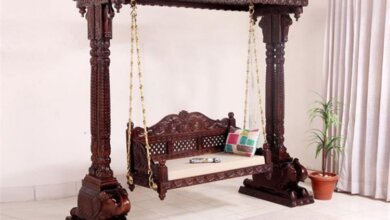Selecting the right uPVC door knob may seem like a minor detail in the overall scheme of home design, but the truth is that door hardware plays a crucial role in both the functionality and aesthetics of your living space.
A well-chosen doorknob not only enhances the appearance of your doors but also contributes to the security and usability of your home. With so many options available, choosing the perfect uPVC door knob can feel overwhelming. This guide will walk you through the essential considerations to make an informed decision.
Understanding uPVC Doors
UPVC door knob, or unplasticized polyvinyl chloride, is a type of plastic commonly used in modern doors and windows due to its durability, low maintenance, and energy efficiency. Unlike wooden doors, uPVC doors are resistant to rot, rust, and warping, making them ideal for both exterior and interior applications. However, because uPVC is a relatively soft material compared to wood or metal, the choice of door hardware—especially knobs—requires careful thought to ensure long-lasting performance and aesthetic appeal.
1. Consider the Purpose of the Door
Before selecting a doorknob, it’s important to understand the function of the door it will be attached to. Interior doors, such as bedroom or bathroom doors, often require knobs with simple locking mechanisms or privacy functions. Exterior doors, on the other hand, demand higher security features, such as multi-point locking systems or reinforced knobs. By considering the purpose of each door, you can narrow down the options to those that provide the right balance of security and convenience.
Interior doors: Look for knobs that are easy to grip and operate. Privacy locks for bathrooms or bedrooms can add functionality without compromising style.
Exterior doors: Focus on durability, strength, and security. Key-operated knobs, multipoint locks, or reinforced handles are recommended.
2. Choose the Right Material
While uPVC doors themselves are made of plastic, door knobs come in a variety of materials, each offering different benefits. Common materials include:
Aluminum: Lightweight and corrosion-resistant, aluminum knobs are ideal for high-traffic areas.
Brass: Offers a classic and luxurious appearance and is naturally antimicrobial.
Stainless Steel: Extremely durable and resistant to rust, making it perfect for exterior use.
Zinc Alloy: Versatile and cost-effective, often plated with chrome, nickel, or other finishes for aesthetic appeal.
When choosing the material, consider both durability and compatibility with your door design. For example, a sleek stainless steel knob complements modern minimalist doors, while a brass knob enhances traditional or Victorian-style interiors.
3. Pay Attention to Design and Finish
Door knobs are not just functional—they are also a key element of interior and exterior design. The right style can elevate the overall look of your home. Consider the following design aspects:
Shape: Round knobs are classic and easy to operate, while lever-style handles offer modern aesthetics and accessibility for people with mobility challenges.
Finish: Common finishes include polished chrome, brushed nickel, antique brass, matte black, and satin bronze. The finish should harmonize with other hardware and fixtures in your home, such as cabinet handles, light fixtures, and window frames.
Decorative Elements: Some knobs feature intricate designs, patterns, or textures that add character to a room. However, keep in mind that overly ornate knobs may not suit contemporary interiors.
It’s also wise to ensure that the knob’s finish is resistant to fading, scratches, and tarnishing, especially for exterior doors exposed to sunlight and weather.
4. Check Compatibility with Your uPVC Door
uPVC doors typically have specific requirements when it comes to hardware installation. Not all door knobs are compatible with every uPVC door. Here are some key considerations:
Spindle Size: The spindle is the square rod that connects the two sides of the knob. Make sure the spindle length and width match your door’s thickness and mechanism.
Locking Mechanism: If your door has a multipoint lock, ensure the knob can operate it smoothly. Some knobs are designed specifically for standard latches, while others integrate with more complex systems.
Door Thickness: uPVC doors vary in thickness, and some knobs are adjustable, while others are fixed. Measure your door accurately before purchasing.
Choosing hardware compatible with your uPVC door ensures smooth operation, longevity, and security.
5. Prioritize Ergonomics and Ease of Use
A beautiful knob is useless if it is uncomfortable to use. Ergonomics should be a priority, especially for doors that are used frequently. Consider the following:
Grip: Test how the knob feels in your hand. Lever handles may be easier to use for children, the elderly, or people with physical disabilities.
Operation: Ensure the knob turns smoothly without sticking. Poorly designed knobs can damage the door over time.
Accessibility: For exterior doors, consider knobs that can be locked and unlocked easily with keys, digital codes, or even smart locks.
Comfortable and functional hardware reduces frustration and enhances the user experience in your home.
6. Security Features
Security is a critical factor, particularly for front doors. When choosing a uPVC door knob for exterior doors, consider:
Lock Type: Cylindrical, mortise, or multipoint locks offer varying levels of security. Multipoint locks are generally more secure for uPVC doors.
Anti-Snap and Anti-Bump Features: Modern locks often include anti-snap and anti-bump technology to protect against break-ins.
Reinforcement: Some knobs come with reinforced backplates to prevent tampering or forced entry.
A secure knob not only protects your home but also provides peace of mind for you and your family.
7. Maintenance and Durability
One of the advantages of uPVC doors is low maintenance, but the same cannot be said for all door knobs. Choose knobs that are easy to clean and resistant to wear and tear. Polished finishes may require regular wiping to maintain their shine, while brushed or matte finishes can hide fingerprints and scratches. Stainless steel and zinc alloy knobs generally require minimal upkeep and retain their appearance for years.
8. Budget Considerations
uPVC door knobs are available at a wide range of price points. While it may be tempting to opt for the cheapest option, investing in quality hardware ensures durability, security, and long-term satisfaction. Determine your budget in advance but consider quality and functionality as equally important factors. Sometimes spending a little extra upfront saves money on replacements and repairs down the line.
9. Trend vs. Timelessness
Finally, consider whether you want a trendy knob that aligns with current interior design fashions or a timeless option that will remain stylish for decades. Sleek, minimalist designs are popular now, but classic round or lever handles can complement various décor styles over time. Striking the right balance between trendiness and timelessness ensures your choice remains visually appealing in the long run.
Conclusion
Choosing the perfect UPVC door knob involves a thoughtful combination of style, function, security, and compatibility. By considering the purpose of the door, the material, design, ergonomics, security features, and maintenance requirements, you can make an informed decision that enhances both the appearance and functionality of your home.
Don’t rush the process—measure carefully, test different options, and prioritize quality over price. The right doorknob may seem like a small detail, but it can make a significant difference in the comfort, safety, and overall aesthetic of your living space.




